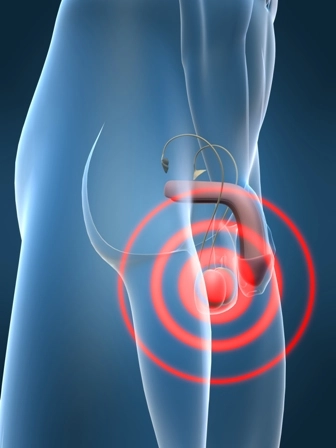Urology Coding Alert
ICD-10:
Know Your Diagnosis Options for Urodynamics
Published on Tue Mar 20, 2018
Watch the details, because you have a variety to choose from.
Many ICD-10 diagnoses can apply to patients who undergo urodynamic tests. Always code based on your physician's documentation. Some common options include:
- G83.4 - Cauda equina syndrome
- N31.2 - Flaccid neuropathic bladder, not elsewhere classified
- N32.81 - Overactive bladder
- N31.2 - Flaccid neuropathic bladder, not elsewhere classified
- N35.9 - Urethral stricture, unspecified
- N36.42 - Intrinsic sphincter deficiency (ISD)
- N40.0 - Benign prostatic hyperplasia without lower urinary tract symptoms
- N40.1 - Benign prostatic hyperplasia with lower urinary tract symptoms
- N39.3 - Stress incontinence (female) (male)
- R30.0 - Dysuria
- R33.9 - Retention of urine, unspecified
- R39.14 - Feeling of incomplete bladder emptying
- R33.8 - Other retention of urine
- R32 - Unspecified urinary incontinence
- N39.41 - Urge incontinence
- N39.46 - Mixed incontinence
- N39.42 - Incontinence without sensory awareness
- N39.43 - Post-void dribbling
- N39.44 - Nocturnal enuresis
- N39.45 - Continuous leakage
- N39.490 - Overflow incontinence
- N39.498 - Other specified urinary incontinence
- R35.0 - Frequency of micturition
- R35.1 - Nocturia
- R39.15 - Urgency of urination
Related Articles
Other Articles in this issue of
Urology Coding Alert
- Procedure Focus:
Test Your Bladder Tumor Removal Savvy With 5 Keys to Success
Check your complicated case savvy against the advice from the experts. It's not uncommon for [...] - Urology Testing:
Be Sure You're Covering Everything During Cystometrograms and Urodynamic Studies
Other studies or services could help build your claim. Urodynamic studies are investigative procedures used [...] - ICD-10:
Know Your Diagnosis Options for Urodynamics
Watch the details, because you have a variety to choose from. Many ICD-10 diagnoses can [...] - You Be the Coder:
Choose This for Ileal Conduit Ureteroscopy
Question: What CPT® code is used when a doctor does a ureteroscopy through an ileal [...] - Reader Question:
Bladder Procedure 51798 Can Be Billed After a TURP
Question: A patient underwent a TURP and then 60 days later (during the global period) [...] - Reader Question:
Report 52648 or 52649 for a Laser Repeat Procedure Over 52630
Question: The urologist's surgical note describes laser enucleation with morcellation of the prostate for a [...] - Reader Question:
Code Buried Penis Repair With 54300 (Most Likely)
Question: What is the correct code to use for buried/hidden penis repair? Nebraska Subscriber Answer: [...] - Reader Question:
Remember Modifier XS for a Separate Organ
Question: The urologist fragmented and extracted a left renal stone and extracted a left ureteral [...] - Reader Question:
Know Your Modifier Options for Return to Surgery
Question: A patient had outpatient surgery that included lithotripsy (50590) with stent insertion (52332). The [...] - Reader Question:
Don't Bill Visits Without Patient Present
Question: One of our physicians had an office visit with only the patient's family to [...]
View All




